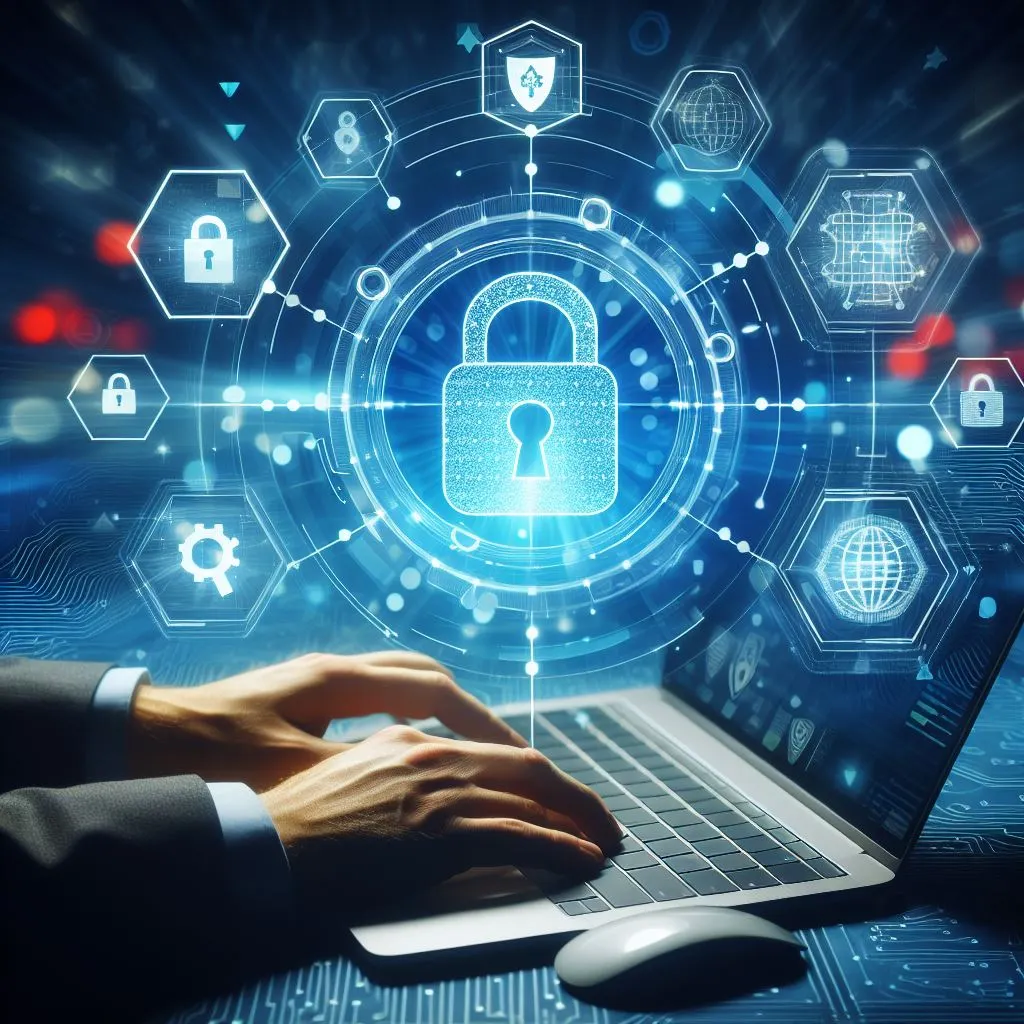The idea of cyber hygiene arises as a key component of our online safety and security in today’s hyper connected digital world, when our lives are inextricably linked to technology. Cyber hygiene is the aggregate term for the routines, behaviors, and procedures designed to strengthen our online defenses against an array of cyber threats. Cyber hygiene is a set of preventive steps intended to shield our digital identities, sensitive data, and networked systems from hostile actors looking to take advantage of weaknesses, just like personal hygiene protects our physical health. This essay aims to shed light on the vital significance of cyber hygiene by examining how it may reduce risks, strengthen digital resilience, and enable people and organizations to securely negotiate the complexity of the online environment.
Adopting strong cyber hygiene habits becomes not only necessary, but essential to our digital life as the digital ecosystem changes and threats get more complex. Come along on this adventure as we explore the foundations of cyber security and how important it is to strengthen our digital defenses in a constantly changing cyber environment.
Why is Cyber Hygiene important?
Cyber hygiene is essential because it lowers the risk of data breaches and cyberattacks by putting best practices and measures in place for cyber threat prevention. In our globally linked environment, it strengthens digital resilience against emerging cyber threats, protects sensitive data, and maintains online privacy.
Here’s a breakdown highlighting the importance of cyber hygiene:
- Risk Mitigation: Using cyber hygiene guidelines lowers your chances of being a victim of ransomware, phishing, malware, and data breaches.
- Sensitive Data Protection: One of the key data protection measures is to limit unwanted access or leaks, good cyber hygiene protects sensitive data, such as financial information, personal information, and proprietary company information.
- Preserving Online Privacy: People may safeguard their online privacy and maintain the confidentiality and security of their personal information by following cyber hygiene guidelines.
- Preserving System Integrity: Cyber hygiene guards against interruptions brought on by malware infections or cyberattacks, preserving the operation and integrity of digital systems.
- Enhancing Digital Resilience: By implementing robust cyber hygiene procedures, people and organizations may increase their ability to withstand potential cyber threats and quickly recover from any possible security mishaps.
- Legal and Compliance Requirements: Adhering to cyber hygiene measures is frequently in line with regulatory compliance standards, guaranteeing legal compliance and averting fines or other legal ramifications.
- Safeguarding Reputation: Practicing good cyber hygiene helps individuals and organizations retain credibility and trust by shielding their reputations from online mishaps that could negatively affect public opinion. For further reading: [https://www.techtarget.com/searchsecurity/definition/cyber-hygiene]
Core elements of Cyber Hygiene
The core elements of cyber hygiene make up the actions that support digital security protocols against cyberattacks. These elements comprise:
- Robust Password Management: The cornerstone of cyber hygiene is the creation, use, and frequent updating of strong, one-of-a-kind passwords for every account.
- Frequent Software Updates: To fix vulnerabilities and bolster defenses against cyber-attacks, it’s essential to keep operating systems, apps, and software updated with the newest security patches.
- Awareness and Education: People who get ongoing instruction and training on identifying and handling cyber threats are better equipped to make wise decisions and fend off frauds and assaults.
- Secure Network Configurations: Strengthening the entire defense against unwanted access or data breaches requires configuring networks with strong security features like firewalls and encryption.
- Data Backups and Recovery Plans: Ensuring that important information can be recovered quickly is ensured by regularly backing up data and creating recovery plans in the event of cyber-attacks or system failures.
- Multifactor Authentication (MFA): By demanding extra verification in addition to passwords, MFA adds an extra layer of protection and drastically lowers the possibility of illegal access.
- Secure Online Conduct: Promoting secure surfing practices reduces the risk of encountering online risks. These practices include staying away from dubious sites, utilizing HTTPS connections, and exercising caution while downloading files. Together, these fundamental components create the strong foundation that protects against a variety of online dangers and weaknesses, serving as the cornerstones of good cyber hygiene. A more detailed reading can be done here: [https://secureops.com/blog/cyber-hygiene-components/]
What are the possible challenges we might face while maintaining cyber hygiene?
Maintaining cyber hygiene poses several challenges due to various factors like human error and behavior, complexity of technology, lack of comprehensive strategies and rapidly evolving threat landscape to name a few. Some of the possible challenges we might face due to inadequate cyber hygiene could be:
- Increased Vulnerabilities: Systems and networks that have inadequate cyber hygiene are more vulnerable to ransomware, malware, and other intrusions.
- Data Breaches: Sensitive information, including financial records, personal information, and confidential company information, may be compromised as a result of poor cyber hygiene.
- Financial Loss and Reputational Damage: Cyber events brought on by poor cyber hygiene can result in large financial losses, such as settlement costs and legal expenditures, as well as harm to an organization’s standing.
- Operational Disruptions: Inadequate cyber hygiene can lead to cyberattacks or breaches, which can impair corporate operations and result in lost time, decreased productivity, and interrupted services.
- Legal and Regulatory Repercussions: A company’s reputation and business operations may be negatively impacted by failing to comply with cybersecurity requirements as a consequence of inadequate cyber hygiene, which may lead to fines from the government and legal action.
- Loss of Customer Trust: Incidents or security breaches resulting from inadequate cyber hygiene damage customer trust, which affects loyalty and relationships and reduces customer base and reputation in the marketplace. By implementing strong cyber hygiene procedures, these issues are lessened and improved cybersecurity, data protection, and resistance to cyberattacks are guaranteed.
So, what are the best practices for Cyber Hygiene?
- Frequent System Updates and Patching: Applying the most recent security updates to software, operating systems, and apps reduces vulnerabilities and fortifies defenses against online attacks.
- Password Strength and Management: Using password managers and creating strong, one-of-a-kind passwords improves overall security posture.
- Employee Training and Awareness Programs: By regularly holding training sessions and awareness campaigns on social engineering techniques, phishing efforts, and safe online activities, people are better equipped to see and avoid any dangers.
- Data Encryption and Secure Backups: Protecting sensitive data from theft or loss and ensuring frequent backups enable quick recovery in the event of an emergency.
- Multifactor Authentication (MFA): By requiring other means of authentication in addition to passwords, enforcing MFA across accounts adds an extra layer of protection.
- Firewall and Antivirus Protection: Networks and devices are protected from a variety of cyber dangers by deploying strong firewalls and dependable antivirus software.
- Regular Security Assessments and Audits: By carrying out regular security assessments and audits, cybersecurity best practices are adhered to, and vulnerabilities are found. Following these recommendations strengthens defenses and lowers the likelihood of becoming a target of cyberattacks, making them the cornerstone of a robust cyber hygiene program. You read more regarding the best practices over here: [https://www.splunk.com/en_us/blog/learn/cyber-hygiene.html]
It’s time to take responsibility for our online security! Ensuring the safety of our online presence requires the use of appropriate cyber hygiene procedures. Start by creating strong, one-of-a-kind passwords, upgrading software often, and being alert for phishing efforts. Adopt multifactor authentication, make data backups, and inform people about cyber threats. By incorporating these techniques into your regular digital activities, you strengthen your personal barriers and help create a safer online environment for all users.
To sum up, cyber hygiene is an essential defense against the numerous risks that threaten our digitally linked world. It is important because it protects private data, strengthens our digital life, and makes sure that our online presence is resilient. Strong cybersecurity procedures help people and organizations lower the risks of cyberattacks by strengthening defenses and minimizing vulnerabilities. This proactive strategy maintains the integrity of digital operations and protects against possible breaches and data intrusions while also protecting privacy.
The importance of cyber hygiene is growing as technology develops, underscoring our shared need to prioritize and put these principles into action. Maintaining a commitment to ongoing education, keeping up with emerging threats, and cultivating a cyber-aware culture are critical in the ongoing fight against cyber attackers. To protect our digital environment and stave off cyberattacks, let’s all make cyber hygiene a top priority. Your proactive actions now will ensure tomorrow’s digital environment is more secure and robust.

